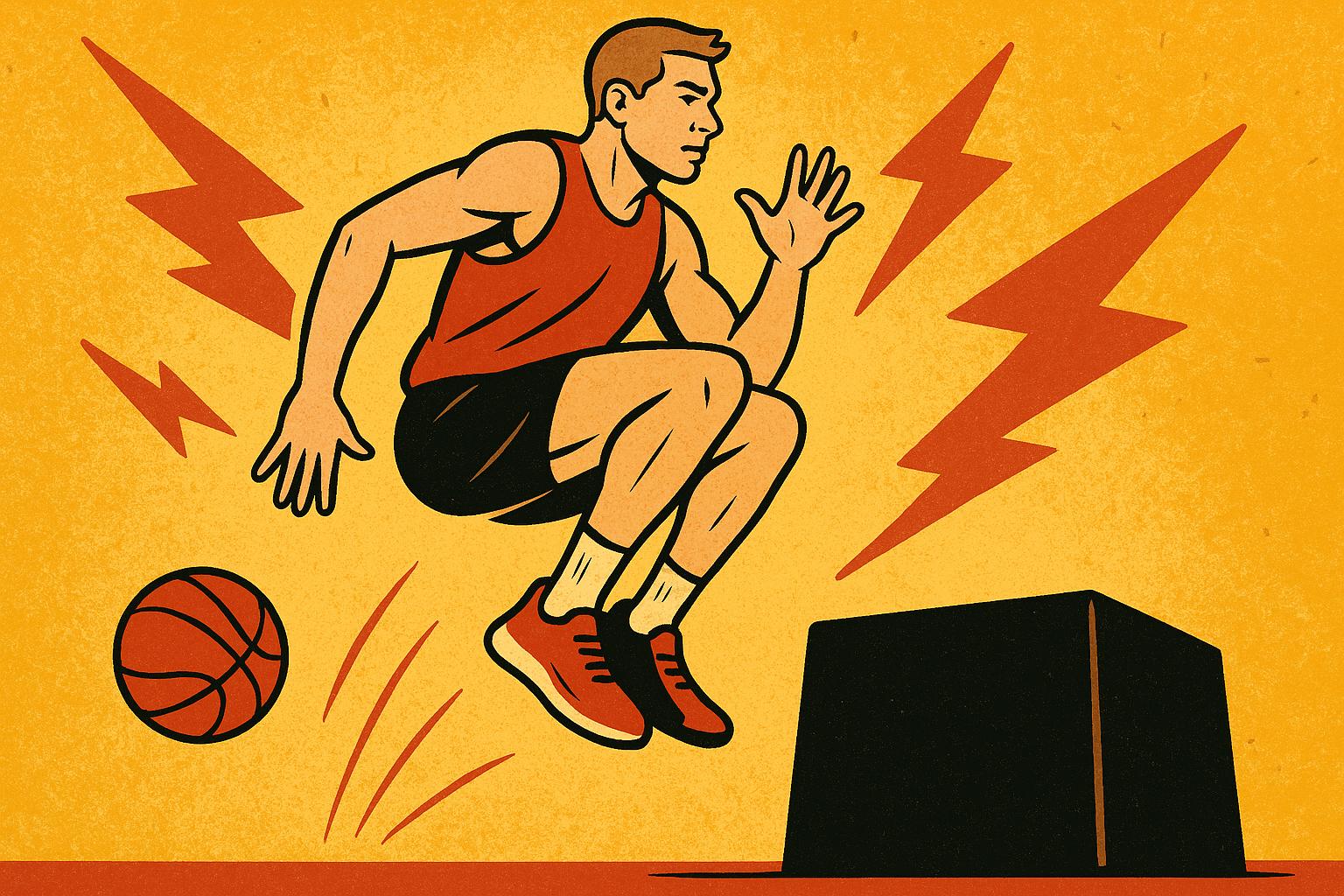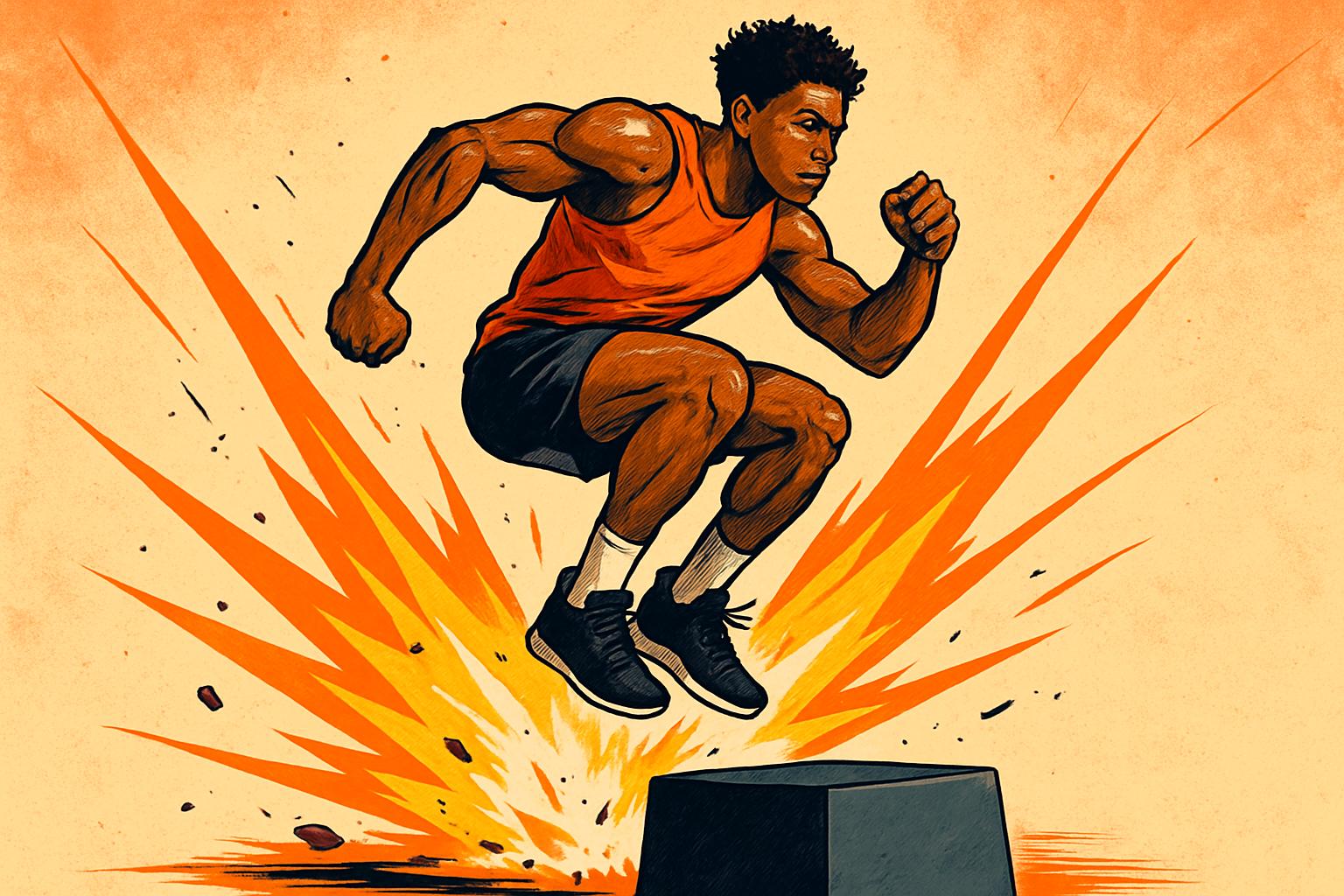Elevating Your Leap: How to Jump Higher through Strength, Form, and Explosive Power
Jumping higher is a dream for athletes across all sports, whether you’re looking to slam dunk in basketball, spike in volleyball, or simply increase your overall athleticism. But how exactly do you elevate your jump? It’s not just about leg strength; it’s about mastering your form, harnessing explosive power, and building a solid foundation through strength training.
In this article, we’ll explore the essential elements of increasing your vertical jump: strength, form, and explosive power. With the right training techniques and a consistent effort, you can unlock your full jumping potential. Let’s break it down, step by step, and help you reach new heights.
Understanding the Key Components of Jumping Higher
Before diving into the methods to improve your jump, it’s important to understand the mechanics of jumping. When you jump, your body relies on a combination of force, speed, and coordination. The power for your jump primarily comes from the muscles in your lower body—your quadriceps, hamstrings, glutes, and calves.
However, jumping isn’t just about leg strength; it’s also about the body’s ability to generate quick, explosive force. This requires a combination of strong muscles, proper technique, and the ability to harness your energy efficiently.
Your jumping ability is the result of three key elements: strength, form, and explosive power. Strength gives you the muscle base, form ensures you’re using your body correctly, and explosive power allows you to apply that strength in the shortest amount of time. Let’s dive deeper into each of these components and how you can train them to jump higher.
Building Strength for a Stronger Jump
Strength is the foundation of any powerful jump. Without sufficient strength, your muscles won’t be able to generate the force needed to propel you upward. Building strength in your legs, core, and even your arms will help you harness your full jumping potential.
Strength training is essential for targeting the key muscles involved in jumping. Exercises like squats, lunges, and deadlifts are perfect for building the muscle mass and power you need in your legs. Squats primarily work your quads, glutes, and hamstrings, while lunges target these same muscle groups, but also engage your stabilizing muscles. Deadlifts are another excellent compound exercise that activates your posterior chain (glutes, hamstrings, and lower back), providing a solid foundation for your jump.
However, don’t just focus on your legs—your core is also crucial in transferring the power from your legs through your entire body. A strong core allows you to stabilize your body during takeoff and landing, preventing injuries and ensuring that the force you generate is applied efficiently.
When strength training, focus on progressively increasing the weight and intensity of your exercises. Over time, this will lead to muscle growth and the ability to generate more force with each jump. Strength training should be a cornerstone of your routine if you want to jump higher.
Mastering Your Form for Maximum Efficiency
Jumping isn’t just about strength—it’s also about using your body properly. Even the strongest athletes won’t reach their full jumping potential if they aren’t utilizing proper form. Form determines how efficiently you can apply the force generated by your muscles, and how well you can transfer that energy into a higher jump.
The key to mastering your form starts with the preparation phase of the jump. Properly engaging your body before you launch into the air is crucial. Start by getting into a low squat position, with your knees bent at about a 90-degree angle. This position pre-loads your muscles and sets you up to release maximum power when you explode upwards.
Your arms play a huge role in your jump form as well. As you squat down, swing your arms back behind you to build momentum. When you push off the ground, use your arms to propel yourself upward, driving them forward and overhead. This adds additional momentum and helps you achieve a higher jump.
Your landing form is equally important. When you land, try to bend your knees slightly to absorb the shock of the impact. This will reduce the risk of injury and allow you to quickly transition into another jump if needed. Practicing good form in both takeoff and landing phases will improve the efficiency of your jump and help you jump higher over time.
Developing Explosive Power for Maximum Jump Height
Explosive power is the ability to generate force quickly. In the context of jumping, it means being able to exert maximum force in the shortest amount of time. The faster you can apply force to the ground, the higher you’ll jump. Explosive power relies on your fast-twitch muscle fibers, which are responsible for quick, explosive movements.
Plyometric exercises are the cornerstone of developing explosive power. These exercises involve rapid stretching and contracting of muscles, forcing them to generate as much force as possible in a short amount of time. Plyometrics help you improve both your strength and speed, making your jumps more explosive.
Box jumps, depth jumps, and broad jumps are all excellent plyometric exercises that target the muscles responsible for jumping. Box jumps, for example, require you to explosively jump onto a raised platform, building power in your quads, hamstrings, and glutes. Depth jumps teach your body how to explode off the ground quickly after absorbing force, while broad jumps focus on generating maximum horizontal distance, which also contributes to vertical power.
One of the most effective ways to increase your explosive power is to focus on speed during your plyometric exercises. It’s not enough to jump high; you need to jump fast. By performing each exercise with as much speed and force as possible, you train your body to generate powerful, explosive movements that will translate into higher jumps.
The Role of Flexibility in Jumping Higher
While strength, form, and explosive power are essential for jumping higher, flexibility is often an overlooked component. Tight muscles, especially in the hamstrings, calves, and hip flexors, can limit your range of motion and prevent you from fully utilizing your jumping potential. Without proper flexibility, you won’t be able to achieve the necessary depth in your squat or activate your muscles fully when you jump.
Incorporating flexibility training into your routine can improve your range of motion and help you achieve a more efficient jump. Focus on dynamic stretching before your workouts to warm up your muscles, and incorporate static stretching after your workouts to improve flexibility.
Foam rolling is also a great way to release tightness in your muscles and improve mobility. Focus on rolling out your quads, hamstrings, calves, and hip flexors, as these muscles play a significant role in your jumping ability. With improved flexibility, your muscles will be able to stretch and contract more efficiently, which will contribute to a higher vertical leap.
Nutrition and Recovery: Fueling Your Jump
To maximize your performance and recover effectively, it’s essential to fuel your body properly. Proper nutrition provides the energy needed for intense workouts and supports muscle growth and recovery. Make sure to eat a balanced diet with a focus on lean proteins, complex carbohydrates, and healthy fats. Protein helps repair muscles after workouts, while carbs provide the energy needed for explosive movements.
Hydration is also key. Staying hydrated ensures that your muscles function optimally during your workouts and helps prevent cramps and injuries. Drink plenty of water before, during, and after your training sessions to keep your body at its best.
Rest and recovery are just as important as training. Your muscles need time to repair and grow stronger after each workout. Aim for 7-9 hours of sleep each night, as this is when your body does most of its recovery work. Additionally, take rest days to allow your muscles to recover fully before your next intense workout.
A Jump Training Plan to Boost Your Vertical
Now that you have a solid understanding of strength, form, explosive power, and recovery, it’s time to put it all together into a structured workout plan. This plan will target all the key elements necessary to increase your vertical jump and improve your overall performance.
Day 1: Strength and Power
Warm-up: 10 minutes of light cardio and dynamic stretching
Squats (3 sets of 8 reps)
Deadlifts (3 sets of 6 reps)
Lunges (3 sets of 10 reps per leg)
Box Jumps (3 sets of 8 reps)
Plank Holds (3 sets of 45 seconds)
Cool-down: Static stretching for legs and lower back
Day 2: Plyometrics and Explosiveness
Warm-up: 10 minutes of light cardio and dynamic stretching
Depth Jumps (3 sets of 6 reps)
Broad Jumps (3 sets of 8 reps)
Tuck Jumps (3 sets of 10 reps)
Single-Leg Box Jumps (2 sets of 6 reps per leg)
Jump Rope (5 minutes)
Cool-down: Static stretching and foam rolling
Day 3: Recovery and Mobility
Active recovery: Light walking or swimming
Foam Rolling (10-15 minutes focusing on legs and hips)
Hip Flexor Stretch (3 sets of 30 seconds per leg)
Hamstring Stretch (3 sets of 30 seconds per leg)
Calf Stretch (3 sets of 30 seconds per leg)
Yoga or Pilates for flexibility
Repeat this training plan for 4-6 weeks, progressively increasing the intensity and volume of your exercises as you build strength and explosive power. Consistency is key to seeing results—focus on your form, push your limits, and be patient as you work toward your goal of jumping higher.
Reaching New Heights: Your Jumping Potential Awaits
Jumping higher is within your reach. By focusing on strength, form, explosive power, flexibility, and recovery, you’ll increase your vertical jump and unlock your full athletic potential. Stay consistent, stay focused, and most importantly, stay motivated. With the right mindset and the right training, you can soar to new heights. The sky’s the limit—are you ready to take that leap?




